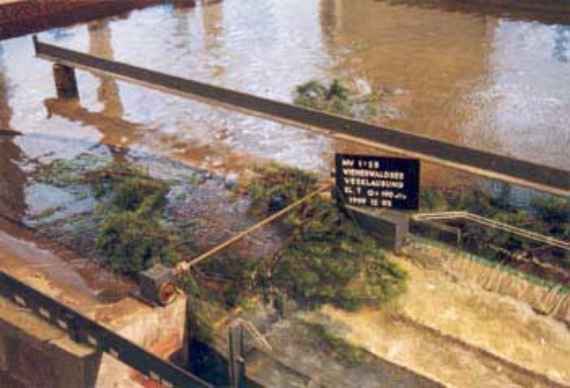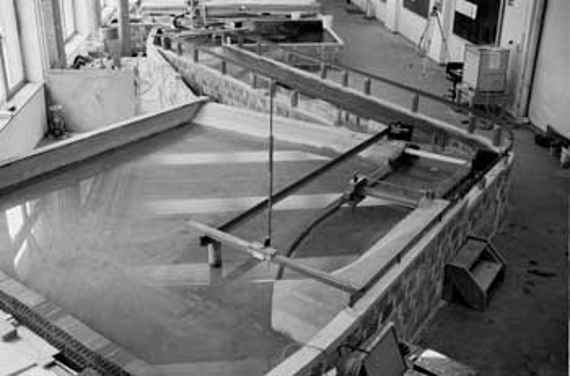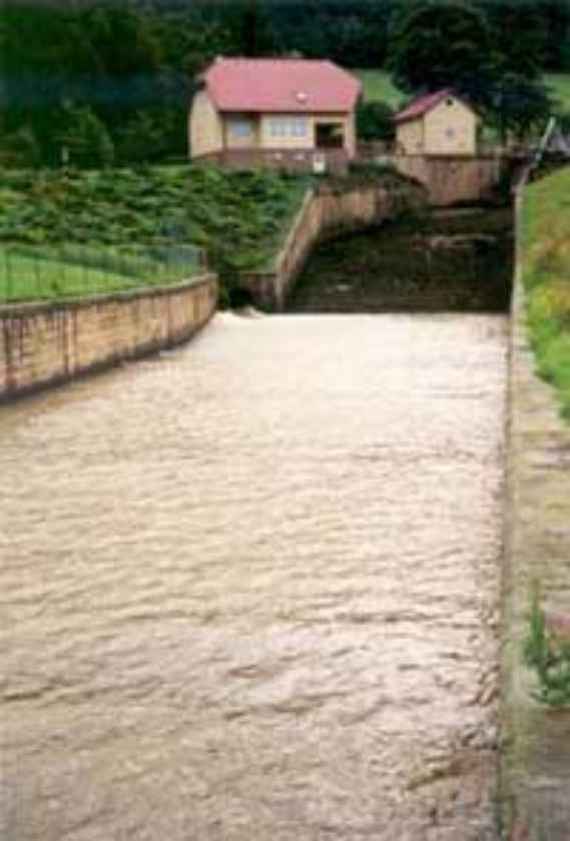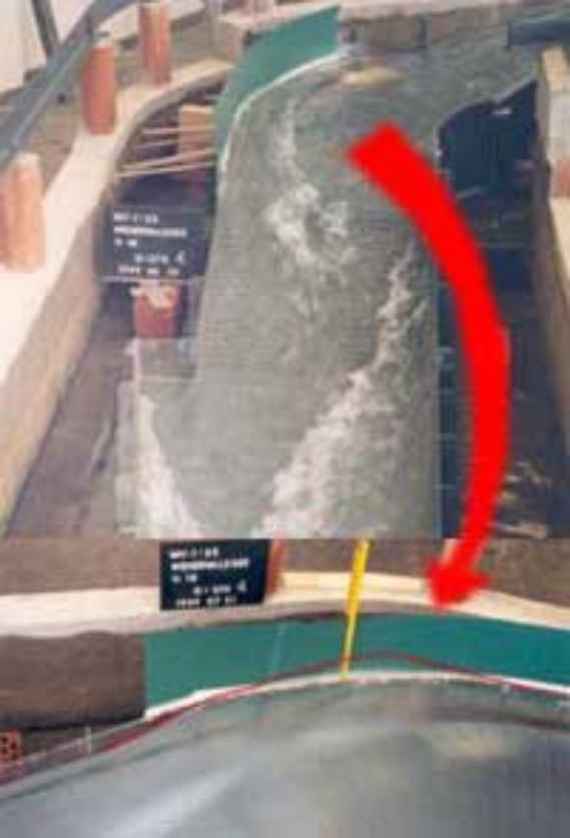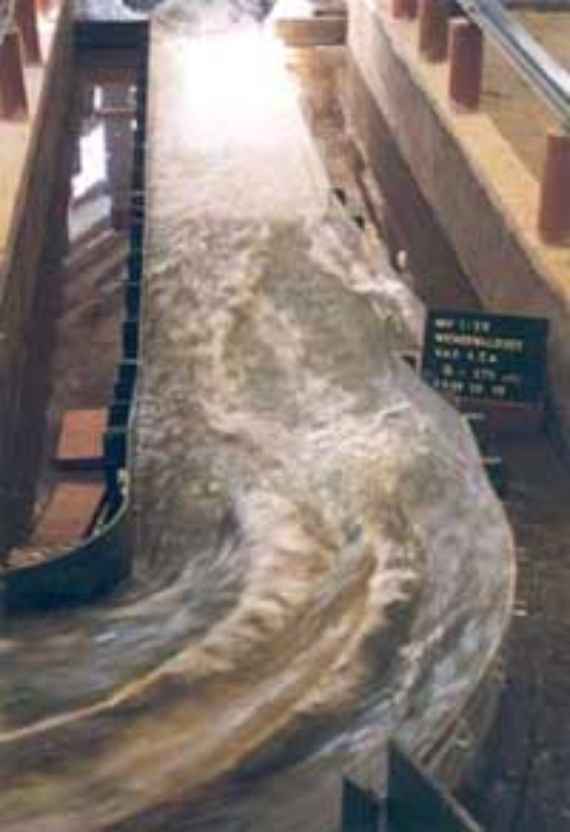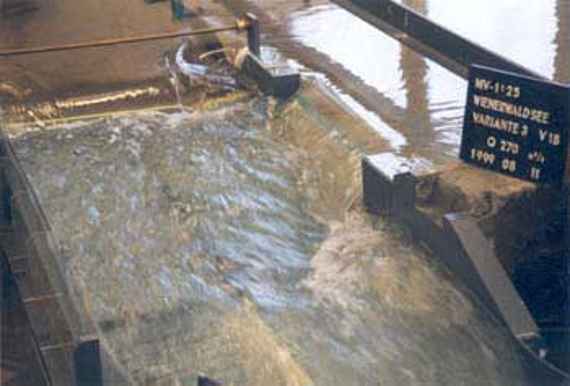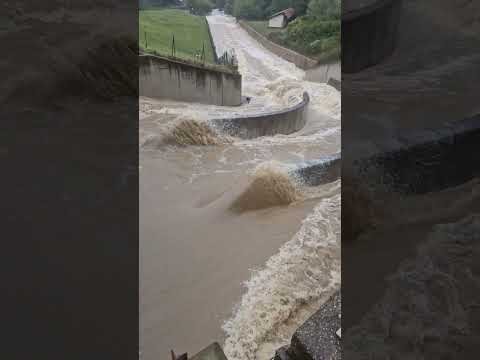At the Wienerwald Reservoir near Pressbaum, various reconstruction measures were needed to adapt the plant to the state of the art and to improve the flood protection of both, the plant and the Wien river.
The intended use of the Wienerwald Reservoir as flood retention required the reconstruction of the spillway. The existing weir flap was to be relocated and complemented by a solid weir. The high risk potential of the reservoir in case of floods due to the densely populated valley of the Wien river situated downstream of the reservoir as well as the changed conditions for the operation of the dam were the reasons for these investigations.
The design of the reconstruction measures, behaviour of the retention and the discharge over the spillway are based on assumptions that cannot be clearly defined by calculation due to the complex spatial flow conditions. However, due to the great importance for the safety of the entire plant, precise knowledge is essential. They can only be determined with the help of a hydraulic model test. The investigation comprised the following hydraulic questions:
- The discharge capacity of the reservoir via the weir flap and the solid weir sill requires free overflow over both parts of the weir. Since they are arranged at a right angle to each other the overfall of both parts of the weirs might mutually influence each other. However, such an influence significantly reduces the discharge capacity. Furthermore, the exact knowledge of the overflow characteristics of both parts of the weir is needed to comply with the regulation and control scheme for the flood retention.
- The cascade spillway with the narrow bend following the weir is problematic.
- The absence of a stilling basin at the end of the spillway prevents a smooth flow transition to the subsequent riverbed of the Wien river.
- Danger of debris jamming at the inflow into the spillway
The main results of the investigations and the derived measures can be summarised as follows:
Overfall processes over the two parts of the weir were investigated. Mutually influenced overfall could only be observed in case of a lowered weir flap and not, when the flap was in upright position. It turned out that the solid weir had to be shortened by 5 m in order to maintain the regulation and control scheme for the flood retention. In addition, the supercritical flow caused serious problems in the spillway, since the training wall of the spillway especially in the outer curve was too low to meet the height of the spillway jet. The velocity along the outer wall was approximately 10 m/s at the maximum discharge which led to a high risk of erosion of the outer river bank. The construction of two partition walls in the spillway forming a trough turned out to be the best solution for these problems. The trough ranged from the weir until the end of the spillway curve. With the help of this trough the hydraulic load onto the outer wall and the bottom of the trough could be reduced considerably. Due to a lack of energy dissipation at the end of the spillway, the transition to subcritical flow into the downstream Wien river was achieved by a wavy hydraulic jump over a long stretch resulting in a high risk of bank erosion due to the waves. The construction of a 20 m long and 1 m deep stilling basin finally resulted in a sufficient energy dissipation and a calmed current in the downstream river reach.
The physical model test also showed that there is a risk of debris jamming, especially at the overfall over the weir flap and, thus, also a risk of increased water levels in the reservoir. As a solution a barrier against flotsam in front of the flap was recommended.
The video linked at the very bottom (on YouTube) shows the flood situation on September 15, 2024. It was a flood of the century and it shows the flood relief of Lake Wienerwald on that day.
The YouTube video was created by a user @Baggerfritz, copied and uploaded to our site. The copyright therefore lies with him/her.
Overview over the physical model of the Wienerwald Reservoir
View of spillway in the nature
Maximum Flood in the spillway with an increased height of the outer bank due to high water levels
Flow control by two partition walls forming a trough (recommended solution)
View of the two weir sills (weir flap and solid sill)
Investigation of the risk of debris jamming using flotsam
The flood spillway system on September 15, 2024.

